Text

Thailand, please adapt something by 白山黑水 (or by Ike Reibun or Yoneda Kou) and cast these two. These two (being minor characters) probably won't even be in the actual series if/when it comes out but I so want to see a gangster BL with the vibe of this scene and this character dynamics.
First, Dr. Lin and Le ge from Unknown

image credit @heretherebedork
He said zhiji (知己) in a Sinaphone BL - that's pretty much makes them a canon CP.
Now the two from The Heart Killers... all in a single week!
What secondary CP syndrome, I am having imagined CP syndrome.
8 notes
·
View notes
Text

This isn't much but it sure got me thinking just maybe Zettai BL ni Naru Sekai VS Zettai BL ni Naritakunai Otoko 2024 would lean into more of the serious, moody and troublesome tropes in BL.
Not gonna happen but just saying.
This is very bad but I wish Konkichi sensei will take that route (in the unlikely occurrence of running out of lighter tropes) so that the live action adaptation can follow. The series hinted at merry BE in the first season but have actively stuck to the lighter tropes.
#zettai bl#zettai bl 3#zettai bl season 3#zettai bl 2024#zettai bl ni naru sekai vs zettai bl ni naritakunai otoko#a man who defies the world of bl#absolute bl
3 notes
·
View notes
Text


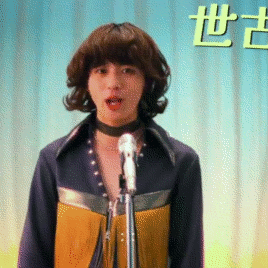


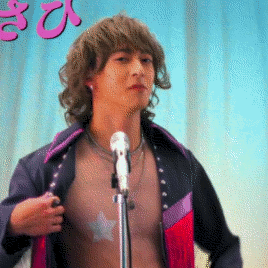


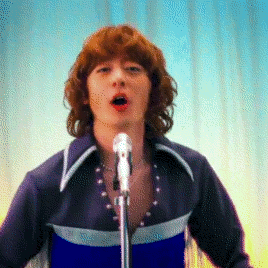
🕺 zettai bl!🕺
#zettai bl#zettai bl 3#zettai bl season 3#zettai bl 2024#zettai bl ni naru sekai vs zettai bl ni naritakunai otoko#a man who defies the world of bl#absolute bl
26 notes
·
View notes
Text
They look so pretty. The opening theme is leaning heavily into to the Takarazuka Revue vibes Miki Koichiro (director of first 2 seasons) had commented about.
Also, there are so many episodes featuring cross-dressing among other shenanigans.
Zettai BL posted a photo from the set of the opening credits. Y’all, it is something else.
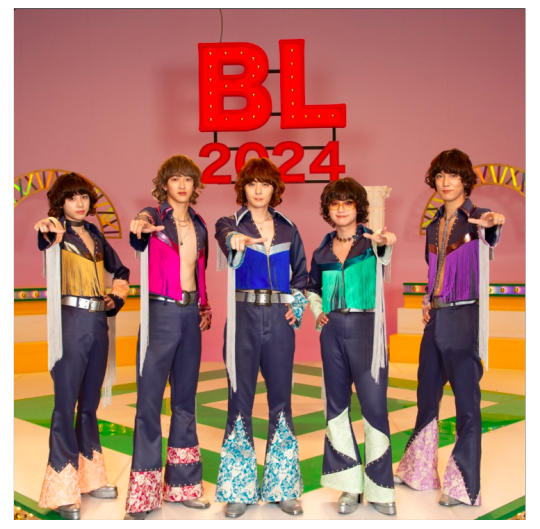
That’s Sekoguchi Ryo on the far left in the outfit with the yellow/orange fringe. And quite the ensemble it is!
It always seemed pretty danged likely he’d be in the credits number, but it’s nice to have that confirmed. If things go the way they did in past seasons, this also means we’re going to see him dancing and singing. And doing at least one of those absurdly flirty interstitial bits.
I still haven’t heard any news about international distribution/streaming, but hope springs eternal.
#zettai bl#zettai bl 3#zettai bl season 3#zettai bl 2024#zettai bl ni naru sekai vs zettai bl ni naritakunai otoko#a man who defies the world of bl#absolute bl
33 notes
·
View notes
Text

yes, yes, yes
a thousand times yes

best fourth wall breaking ever
BL characters are only so much at the hands of their creators.
#japanese bl#boys love#bl jdrama#japanese series#zettai bl ni naru sekai vs zettai bl ni naritakunai otoko#zettai bl 3#Zettai BL ni Naru Sekai VS Zettai BL ni Naritakunai Otoko 2024 (2024)#subtly wishing for my darling doujinshika to switch to commercial BL and to find an overbearing editor#fudanshi being doujinshika has become a trope by now#絶対BLになる世界VS絶対BLになりたくない男 2024#absolute bl 3
5 notes
·
View notes
Text
thank you for inspiring those tender doujin by junk head nosuri

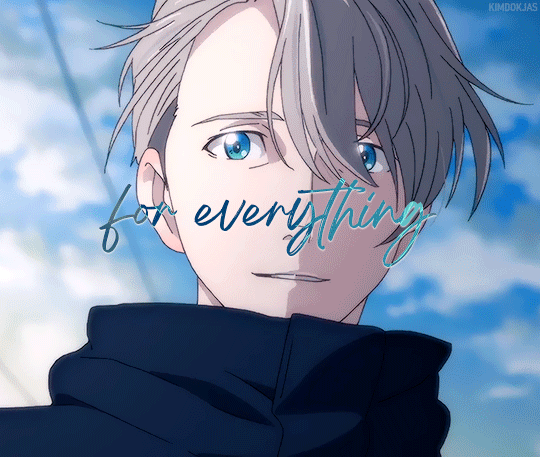
though the movie might be cancelled, yuri on ice will live forever in our hearts. thank you yoi fandom, it's been real ♡
9K notes
·
View notes
Text
imagine...
25 Ji, Akasaka de x Shimbashi Tugboat CROSSOVER

#japanese bl#jdrama#bl jdrama#japanese series#boys love#bara#gei comi#25 Ji#At 25:00 in Akasaka#jiraiya#bl meta#bl tropes#at 25:00 in akasaka#25:00 ji akasaka de#japanese bl drama#bl drama#bl series#asianlgbtqdramas#asian lgbtq dramas#jbl#japanese drama#25 ji akasaka de
0 notes
Text
25 Ji, Akasaka de IRL (1/??)
25 Ji, Akasaka de: Asami finds Yuki in a gay bar looking for someone to have sex with
IRL: EAGLE TOKYO BLUE, Japan, 〒160-0022 Tokyo, Shinjuku City, Shinjuku, 2 Chome−11−2 1階、地下1階 Casa Verde


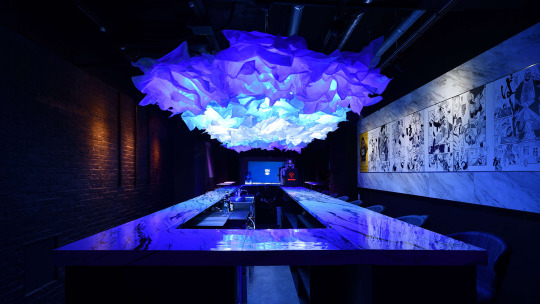
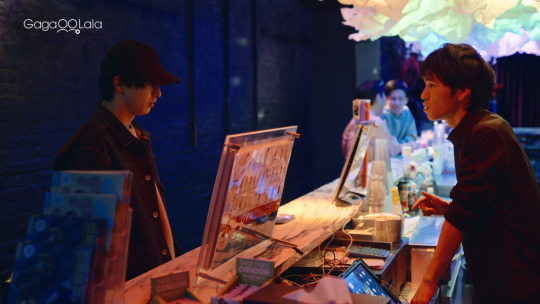
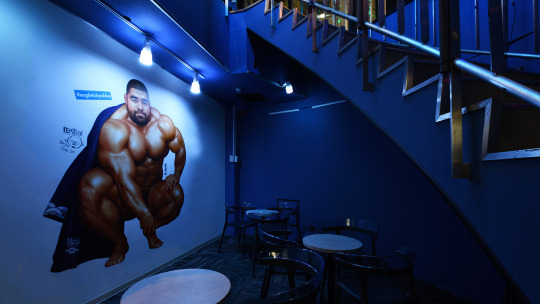
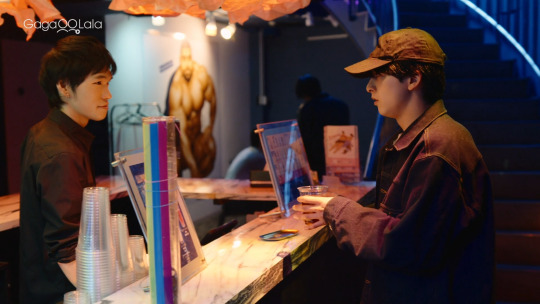
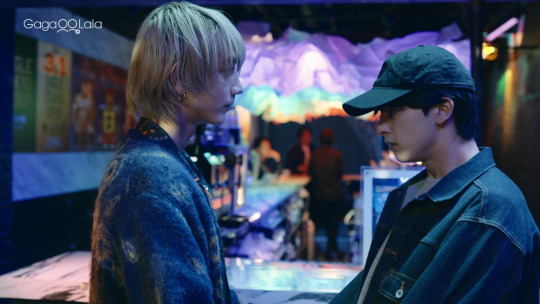
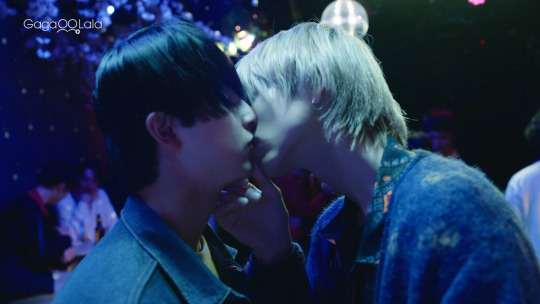
Credit: https://www.eagletokyo.com/
25 Ji, Akasaka de / At 25:00 in Akasaka IRL Locations・Other IRL locations
32 notes
·
View notes
Text
25 Ji, Akasaka de (2024) – ep 1

Hayama Asami - feminine name trope appears in live action BL! This is not the first time (Seven Days plays around with it a lot) but I'll celebrate anyways. But what's with this super-lean sickly young master look with pale bangs? I wish directors wouldn't rely so much on manga to style the characters. What looks good in 2D doesn't always look good in 3D.
This one reminds me so much of Fujimi Orchestra (2012). The choice of colors, camera set up, both outdoor and indoor shots… it seems like the directors were crazy impressed with Fujimi Orchestra and wanted to try that.
The gay bar thing was crazy. I felt like they lifted it off The Cornered Mouse Dreams of Cheese (2020)(a scene that I am rather fond of) and produced a rather washed-out replica. The scene plays out differently in the manga, less chaotic in a way and more intimate. Maybe they are trying what Egoist (2022) did, including actual sexual minorities as extras. I think Egoist did it better with the friend group having at least a few recognizable characters and a bit of a story line and some progression.
Then there is...

Jiraiya’s art in my BL!
Jiraiya's art is at least partly responsible for the current muscle uke aesthetics leaning towards gachimuchi suppleness.
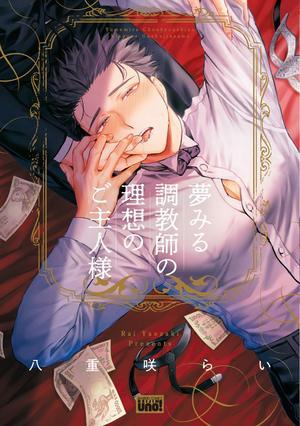


yumemiru choukyoushi no risou no gosyujinsama by 八重咲らい
momichupa oppabu fever time by イクヤス
senyaichiya happy ever after by 拳

How I wish we got this in KabeKoji (more on it here)
Also, when I saw Jiraiya’s art, for a second I thought my man’s gonna step into a bear exclusive bar and would be promptly informed that he is too skinny, hence not welcome. He’ll be thrown out, only to land in the waiting arms of his stalker senpai. Of course that was only wishful thinking.
The manga won Chil-chil BL Award (series category) in 2023 and its CD drama adaptation in that category this year. The likelihood of the live action messing it up or producing a sub-par product is way too high. At least they’re gonna censor the hell out of it, I guess. I really hope I’m wrong.
#japanese bl#jdrama#bl jdrama#japanese series#boys love#bara#gei comi#25 Ji#At 25:00 in Akasaka#jiraiya#bl meta#bl tropes#at 25:00 in akasaka#25:00 ji akasaka de#japanese bl drama#bl drama#bl series#asianlgbtqdramas#asian lgbtq dramas#jbl#japanese drama#25 ji akasaka de
0 notes
Text
School Culture & Male Androphilia in Japan
[This is part of a series on Takumi-kun 6. The aim of this piece is to discuss the origins of student culture and male androphilia & how it plays out in Takumi-kun series.]

Takumi-kun series is an early BL novel by Shinobu Gotoh with an enduring legacy. It is also an on-going work as we follow Takumi-kun and others beyond their student (gakusei) days and into adult (shakaijin) life.
Takumi-kun series is mostly set in an all-males boarding school Shido Academy. As I have mentioned in my previous posts, pre-modern Japan has a long tradition of male androphilia[1], much of which was age-stratified, class-stratified or both and involved strict/normative inserter/insertee dichotomy. BL has inherited (such as in seme/uke dynamics) and bastardized (such as with younger seme/older uke pairing) traditions of male androphilia in its tropes. Let's discuss a bit of the history before diving into how Shinobu Gotoh plays around with the setup of boarding school male-male sexuality that emerged in the Meiji period.
Part 1
[ Main resource used for this part of the write-up is the chapter titled “Toward the Margins: Male-Male Sexuality in Meiji Popular Discourse” from the book Cartographies of Desire: Male-Male Sexuality in Japanese Discourse, 1600-1950 by Gregory M. Pflugfelder. ]
What Review of Senryu From Meiji Japan Reveals
Meiji period Japan saw transformation of Japanese customary male-male sexuality ‘within the newly established framework of a centralized nation-state’.
…male-male sexuality, which had enjoyed a prominent and respectable place in Edo-period popular texts, came during Meiji times to be routinely represented as “barbarous,” “immoral,” or simply “unspeakable.”
The marginalization of male-male sexuality can be traced through its representation in senryü verse composed during that period. In post-Meiji Restoration popular humor Yoshichö districts of Edo well-known for organized sex work was no longer associated with the kagema or male sex worker. Instead, it was associated with female geisha, mirroring the 18th centuary decline of kagema teahouse and their shutdown by local authorities'. Once mainstream male-male sex work had to go underground and faded from popular memory.
Just as old customs were forgotten, new ones emerged in senryu of 1880.
Two figures […] associated with male-male sexuality were the bantö and detchi—clerk and apprentice, respectively, in a commercial house. The bantö wielded considerable authority over other employees, and had been portrayed in senryü since the Edo period indulging his lechery with young male coworkers. The detchi, on the other hand, may be seen as the merchant version of the priestly chigo or samurai page boy: male adolescents for whom the favor or disfavor of senior males might have significant consequences for their professional advancement.
Meanwhile male-male sexuality involving Buddhist priests went from being considered ‘a lesser transgression than fornication with women’ and a ‘contradiction between the priest's personal indulgence and the ascetic ideals of his religion” to an “emblem of “ancient evils” (kyühei) in dire need of reform’ and ‘a criminal offense’.
Following period saw state regulation of representation of sexuality in media (print media, theatre and paintings - artist Kawanabe Kyösai’s erotic drawing of Meiji oligarch Sanjö Sanetomi & a male foreigner landed him in jail; not much different from jailing of ero BL creators in present day[2]) and a shift in popular discourse that deemed that male-male eroticism has no place in the “civilized” environment of Meiji. Male-male sexuality was further marginalized through silence resulting from ‘state censorship, editorial discretion, authorial inclination, public taste’, etc. Meiji journalists continued reporting on male-male sexuality but adopted a tone of moralistic outrage and condemnation.
In the demarcation of civilized behavior, male-male sexuality was relegated to ‘the Japanese past, the southwestern periphery, and the world of adolescence’.
Japanese Past
‘Male-male erotic practices lay in the past’ which was seen as ‘a backward and “feudal” age, whose institutions and customs Japan must abandon in order to achieve “civilization.”’
Meiji era authors depicted male-male sexuality with historical backdrop (such as samurai society of the Sengoku and Edo eras) that would excuse their representation in the name of historical accuracy. [This is in contrast to say depiction in cinema which has largely avoided depiction of nanshoku with exception of Taboo (1999) and Kubi (2023).]
Pflugfelder gives a couple of examples:
Higeotoko (Man with a Beard; 1890–1896) by Köda Rohan – very shonen ai about the whole thing – involved light hand-holding and fade to blank.
Kagema no adauchi (Kagema's Vendetta; 1899) by Jöno Denpei –about a professional “love boy”. As a person born in 1832 Jöno was familiar with male sex workers like the protagonist from his childhood. But the practice has thoroughly disappeared from the cultural fabric by 1899 that Jöno had to introduce the protagonist whose profession was “disgraceful” “from today's perspective” and his gender identity ambiguous.
Marginalization of Male-Male Sexuality Was Japan's Southwestern Periphery
Centered around Kagoshima prefecture (the former domain of Satsuma), the region encompassed various parts of Kyushu, Shikoku, and Honshu. During the Meiji period, it was popularly believed that male-male erotic practices were more prevalent here than in the rest of Japan. Other than the obvious geographic distinction, there was a social reason too for this distinction. It was believed the region was a stronghold of old customs with lasting imprints of samurai class and the high concentration of warrior families. Satsuma had customary homosocial groups with strict sex-segregation practices such as hekogumi and gojü until the Restoration.
Male-male erotic interaction […] was reportedly common within such groups.
… the martial ethos of the samurai class slowly dissolved under the pressure of social change and “civilized morality.” Contemporary observers correlated the deterioration of shiki or “warrior morale” with a decline in male-male erotic practices.[3]
During the Meiji period, southwestern region (Kagoshima in particular) was known for its male-male sexual practices. These practices were seen as regional peculiarities, distinct from the mainstream culture centered in Tokyo. The southwestern region was viewed as a “feudal” backwater, and the association of male-male erotic practices with this area underscored their perceived “uncivilized” nature. Instead of being seen as a universal practice [the way shudo was percieved], male-male sexuality was considered a “folkway” (füzokü) surviving on the cultural margins of a newly “civilized” nation-state. In the 20th century, sexologists further marginalized these practices by diagnosing regions like Kagoshima with a hereditary condition called “regional same-sex love” (chihôteki döseiai). This effectively contained male-male sexuality within specific geographical and cultural boundaries.
Moreover, from Kagoshima men’s regional identity imperial navy and seafaring got associated with male-male eroticism in Meiji Japan.
male-male sexuality & the world of adolescence
… the sexual object in shudö had always been defined as a young male. In Meiji popular discourse, as in that of the Edo period, it was generally understood that youthfulness formed one of the conditions of male-male erotic desirability. More and more commonly, however, the desiring party too was presumed to be an adolescent, older than his partner as a rule, but neither of them yet an adult.
‘Adolescence (seishun) as an “institutionalized moratorium between childhood and adulthood” [allowed for a] social space where adult standards did not fully apply’. This also allowed male-male sexuality which had gained the status of uncivilized behavior to be excused as ‘youthful folly’.
Institutions of formal education were around since Edo period and so was male-male erotic practices in them. Not only that but also ‘violence between rivals in love’. Following the Restoration, schools mushroomed throughout Japan with an added emphasis on education as a vehicle for social mobility. Students, tasked with future nation building, were expected to be diligent in their study and to stay away from sexual diversion. Male-male sexuality in schools were not just that in discourse of the day but was inextricably linked with ‘shifting definitions of masculinity, regional and political rivalries, and the ongoing “civilization” of morality’.
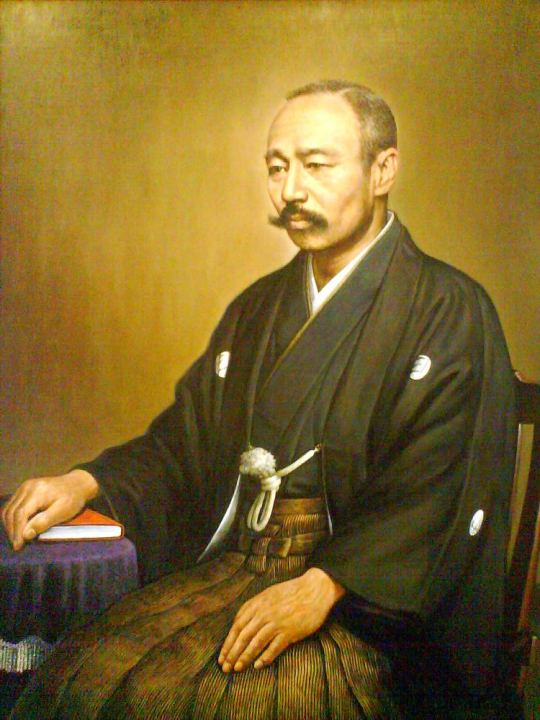
Mori Ögai - father of Mori Mari who wrote the first BL
Two terms born out of Mori Ögai's 1909 novel critiquing naturalism[4] Wita sekusuarisu (Vita Sexualis) köha and nanpa were used in discourses surrounding male-male sexuality among students. The term köha (translated as “roughnecks” by Pflugfelder and “queers” by Kazuji Ninomiya and Sanford Goldstein) referred to students who eschewed interest in male-female eroticism instead engaged in male-male sexual relations. This was in contrast to their nanpa (translated as “smoothies” by Pflugfelder and “mashers” by Kazuji Ninomiya and Sanford Goldstein) classmates.
[These are penetrator roles but not fixed categories. Students did move from one category to another even in Mori's novel. "Boy" (shonen) who were penetrated could take up penetrator role later on.]
“Smoothies” […] did not tuck up their sleeves or swagger about with menacing shoulders like their “roughneck” peers, but instead dandified themselves in silk kimonos and white socks (tabi) in order to win the favor of women.
In Mori’s school köha student were mostly from Kyushu and southwest Honshu prefecture of Yamaguchi while nanpa were from northeastern region. This regional distinction shows up in Tsubouchi Shöyö's novel Tösei shosei katagi (Spirit of Present Day Students; 1885–1886) wherein Kiriyama Benroku a quintessential köha is a native of Kyushu who wears coarse garb and is contrasted against his classmates womanizing peers not only by his leaning towards samurai ideals of masculinity but also by his interest in his companion Miyaga.
The köha-style of masculinity was modelled on engaging brute strength even in erotic dealings. Moreover ‘the strict age hierarchy that prevailed in student society constrained the very notion of consent, since junior males were in principle supposed to obey the dictates of senior schoolmates.’
In such an environment, male-male sexual practices often took a predatory form, with younger students providing fodder for older ones.
However, there were also non-forced köha-shonen sexual relations too.
Mori describes, for instance, a set of crude hand signals whereby a “boy” could consent to or refuse a senior male's overtures; subtler forms of seduction involved treats, favors, and the prospect of “special protection” (tokubetsu na hogo) by the older party.
Meiji newspapers was eager to cover köha violence wherein the older students who preyed upon “beautiful boy” in the streets of Tokyo and other Meiji cities or fought over a “beautiful boy”. They stood to gain readership especially those from middle- and upper-class who were likely to send their kids to boarding schools. It also fit well in the political context with journalistic crusade aimed at male-male sexuality & exploitation as a “Satsuma habit” in a time when ‘domination of the national government by the so-called “Satsuma clique” (Satsubatsu) faced mounting criticism’.
The portrayal of köha by journalists in post-Restoration Japan led to a strong association between male-male sexuality and adolescence. This association was so strong that any discussion of male-male sexuality would inevitably reference student societies and dormitories as common places for such relationships. Furthermore, accounts of school life often highlighted the culture of male-male eroticism as a distinctive feature. This is evident in memoirs by several notable figures such as Ösugi Sakae (himself a former köha), Iwaya Saza-nami, Ubukata Toshirô, as well as in literary works by Dazai Osamu, Hori Tatsuo, Kawabata Yasunari, Mushanoköji Saneatsu, Origuchi Shinobu, Satomi Ton, Tanizaki Jun’ichirö, and Uno Köji.
Chigo-nise ties (that is, erotic relationships between junior and senior youths) were reportedly common [in Kagoshima] as late as the 1940s, while student memoirs and other accounts describe similar attachments in schools outside the region. With the twentieth-century rise of the notion of [döseiai] “same-sex love,” however, popular representations of such relationships would come increasingly to focus on their psychological features, rather than on physical predation of the Meiji type.
The other half of the ‘asymmetric dyad that made up a male-male erotic relationship’, the sexually penetrated partner, is referred to as ‘shonen’ (boy) in student lingo. By then a mix of inherited knowledge from various arena – Japanese past, classical Chinese, and contemporary forensic pathology – entered public discourse such as seen in Kömurö Shujin's Bishönenron (On the Beautiful Boy).
In Kömurö Shujin's work, the primary effect of this paradigm was to bring to the fore the psychology and physiology of the “beautiful boy” in a manner that would become increasingly common as the century progressed. Kömurö Shujin cited an impressive array of Western authorities on “same-sex love,” most of them doctors or scientists who believed that the “passive” partner in male-male intercourse differed from others of his sex on the basis of certain mental and physical peculiarities, both inborn and acquired. At the same time, the author's understanding of Western sexology was filtered through a set of native assumptions, emerging in a form that often differed in telling ways from the intentions of the original theorists.
Masculinity of wakashu was rarely ever problematized during Edo period. But with the medicalization of male-male sexuality led to attribution of “effemination” with “passive” partner put forth by Western sexologists as Richard von Krafft-Ebing to gain traction in Japan and persist.
[Parallels can be found in bishonen (beautiful boy) stock in BL deemed feminine by readers unfamiliar with the bishonen aesthetics. For example, misattribution bishonen Ayase even when contrasted with feminine Someya in No Money. This also extends to treatment of seme/uke dynamics as though it is a reflection of heterosexual pairing when it is in fact a pairing of two different masculine aesthetics, not to ignore the misogynistic, xenophobic and colonial conception of men who do not fit into specific masculine aesthetics being deemed unmanly/feminine.
Interestingly, Miki Koichiro the director (and screenwriter) of Pornographer, Given, Zettai BL, Bokura no Micro na Shuumatsu etc. is well versed in the male androphilic traditions (among other queer traditions). We can see him using the term “shonen” when instructing the young actor playing Mob-san’s brother’s friend who has a crush on Mob-san. His usage was perfect, proving that he knows what he is doing.]
Part 2
Relics of traditional androphilia in Takumi-kun series
The norm or at least the expectation is that senior students (senpai) pursue pretty boy (bishonen) juniors (kouhai).
This is what outsiders expect even within the universe the novel series is set in as is seen from the conversation between Gii, his best friend Akaike Shouzou and Namiko (Shouzou’s girlfriend) in Sorera Subete Itoshiki Hibi (Those Were Precious Days), a part that never got live action adaptation.
This plays out in Takumi-kun series in various ways. There are two notable bishonen in Takumi-kun’s batch: Gii with his exotic beauty and the princess-like Takabayashi Izumi. In case of pursuit of Gii plays out in a pretty straight forward manner. He is relentlessly chased by seniors who are interested in Gii and their numerous attempts at wooing him.
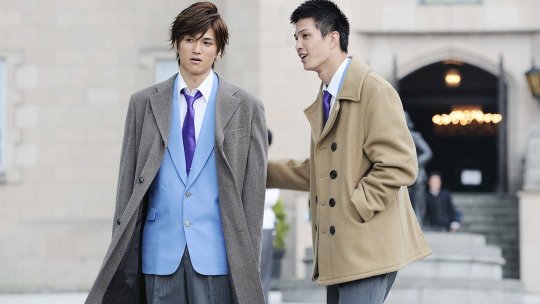
Takumi-kun 4 - Gii & Sagara
Notable pursuer is Sagara Takahiro who was in the third year when Gii joins Shidou. Sagara as the school president organized many recreational events hoping Gii would participate and they would grow closer. But Gii refuses to participate except for in the final one which took place in Sagara’s absence, the Shinto Shrine Hunt event that is depicted in Takumi-kun 6. Even though the pursuit plays out straight forwardly, it come to nothing since Gii is not there to be pursued. He is there to pursue Takumi-kun.
In case of Takabayashi Izumi, he turns his most ardent pursuers into a band of followers. This obedient little group of lackeys help him to stir up trouble for his love rival Takumi. Moreover, Takabayashi is one of Gii’s pursuers. This pursuit also doesn’t yield any result as Gii doesn’t entertain any pursuit.
Thus, both bishonen of Takumi’s batch subverts expectations surrounding bishonen by being pursuers.
Takabayashi’s plot gets further complicated when he falls in love with Yoshizawa Michio. Their pairing is that of weak seme x weak uke type – both are reluctant to actively pursue each other and requires external intervention to set their ship in motion.
Meanwhile Misu Arata wishes to be the target of his senior Sagara Takahiro’s affections. He actively participates in Sagara’s events wanting to get close [and they do get close as schoolmates] but Sagara is only interested in Gii.

Takumi-kun 4 - Shingyouji & Misu
Misu’s plot further deviates from the pursued bishonen track when a junior (Shingyouji Kanemi) pursues and eventually gets together with him in a clear inversion of the norm.
Takumi is also pursued by his seniors. Aso Kei’s pursuit is depicted in Takumi-kun 6 while Nozaki Daisuke’s attempts at courtship is depicted in Takumi-kun 1.
Aso Kei is the only one Takumi is comfortable interacting with apart from Katakura Toshihisa (Takumi’s best friend). Aso’s pursuit is aided by Gii who wholeheartedly wishes for Takumi’s happiness irrespective of whom he gets together with. Gii creates opportunities for Aso and Takumi to meet by delegating library duty to Takumi when Aso is around thus getting them to interact. Aso’s courtship fails and he takes it out on Gii by showing off – he lies to him that Takumi agreed to shrine hunt with him. When Gii notices that Takumi doesn’t reciprocate Aso’s feelings, he decides to actively pursue Takumi and turns from Aso’s enabler to rival in love.
Nozaki Daisuke’s pursuit of Takumi plays out within the senior pursuing junior set up. Another classic trope is that of love rivals fighting over a bishonen with both literary and in real life precedents. This is evoked in a race between Gii and Nozaki in Takumi’s name from Takumi-kun 1. Here the love rival’s competition is complicated since Gii is a bishonen who is fought over by many others (Takumi, Takabayashi, Nogawa Masaru*, etc).
* Nogawa Masaru is not depicted in any of the movies as far as I can remember.
Even though the novel series is called Takumi-kun series, there are many parts that doesn’t involve Takumi-kun and some of them are exclusively from the point of view of other characters. All in all, Takumi-kun series is like an anthology of many many love stories involving characters who are directly or indirectly connected to Takumi-kun. There are other stories involving younger pursuer and older pursued with all sorts of seme/uke arrangements. Here are some that I can recall right away:
Even guys who are not androphilic such as Akaike Shouzou gets pursued by seniors (Shibata Shun in Shouzou’s case). But these courtships are doomed from the get go.
Younger guy pursues older – senior & junior, teacher & student, etc.
senior x junior pursuit abandoned to establish senior x senior romance (Moriyama & Shibata) or junior x junior romance.
senior x junior romance sometimes end in heartbreak. (Takumi-kun 2)
senior x senior relationships are abandoned in pursuit of senior x junior relationship.
Sometimes seniors employ their seniority to retain power imbalance. (Misu and Shingyouji)
In case it is not clear, who pursues who has got nothing to do with who is seme, uke or riba and vice versa. Since the novel series involves many pairings, we get to see all sorts of seme/uke/riba dynamics (if we are to call it that given Takumi-kun is a June novel).
-
Footnotes
[1] I prefer using male androphilia because queerness is a bit too vague and in most case in inappropriate since it was the norm. Academics usually use male-male sexuality, male-male desire, male-male eroticism, etc.
Male androphilia must not be confused with the narrower term homosexuality.
[2] Danmei author Tian Yi and her companions were sentenced for 10 years for profiting from obscene content on male-male sexuality.
[3] while the courting of “beautiful boys” was a “barbaric custom” (banpü), domain authorities during the Edo period had tacitly encouraged it as a means of preventing young men from going “soft” (nyüjaku) through erotic involvement with women (joshoku).
[4] In the Company of Men: Representations of Male-Male Sexuality In Meiji Literature by Jim Reichert (199-208)
-
Takumi-kun meta series
1.Trailer plus
2.School culture and male androphilia in Japan. (you are here)
3.How does the movie compare with the source novel?
4.How does the movie compare with previous adaptations?
#takumi kun series#takumi-kun 6#japanese bl#タクミくんシリーズ 長い長い物語の始まりの朝。#タクミくんシリーズ#Gotoh Shinobu#Takumi-kun Series 6: The Morning of the Beginning of a Long#Takumi-kun Shirizu 6#タクミくんシリーズ6#Takumi-kun: The Dawn of the Long Tales#takumi kun 6#takumi kun 1#takumi kun 2#takumi kun 3#takumi kun 4#takumi kun 5#Takumi-kun Series 1: And The Spring Breeze Whispers (2007)#Takumi-kun Series 1: And The Spring Breeze Whispers#Takumi-kun Series 1#Soshite Harukaze ni Sasayaite#Takumi-kun Series 2: Rainbow Colored Glass (2009)#Takumi-kun Series 2: Rainbow Colored Glass#Takumi-kun Series 2#Takumi-kun Series 2: Nijiiro no Garasu#Takumi-kun Series 3: The Beauty of Detail (2010)#Takumi-kun Series 3: The Beauty of Detail#Takumi-kun Series 3#Takumi-kun Series 3: Bibou no Detail#タクミくんシリーズ3「美貌のディテイル」#タクミくんシリーズ3
1 note
·
View note
Link
Examining the DNA of BL
Takemiya & Hagio
Edited by Arianna, Oscar, Nabilah, & Hilal
Content Warning: Mentions of p*dophilia, p*derasty, and sexual abuse.
NOTE: Alt-text and image credits can be found on our Wordpress blog
Setting the Stage:
This article is the first of many entries in a series dedicated to exploring the genre labels encompassing male-male romance media marketed to women. We begin this endeavor by examining the early careers of two prominent artists in the history of male-male romance centric manga, Keiko Takemiya and Moto Hagio, and their contributions to the formation of the shounen-ai genre. These two artists created standalone one-shots as rookies before eventually publishing their career-defining works. Their lives and careers intersected in a now highly-mythologized period of their personal histories. In investigating this period, we will highlight the works which remain embedded in the DNA of the commercial genre we know today as BL (Boys’ Love), male-male romance and erotica made primarily by women and marketed towards a predominantly female audience. We also touch on the media and literature which informed these works.
The late 60’s and early 70’s was a time of change in the world of shoujo manga, comics for girls. More female artists had gained prominence in the category throughout the 60’s, such as Hideko Mizuno, Miyako Maki, and Masako Watanabe. Publications dedicated solely to shoujo manga replaced the pre-war girls novelette magazines, setting the stage for a brand new generation of female manga artists to make their mark in the world of shoujo manga [1].
Having debuted in the midst of a growing and changing manga industry, Takemiya (debuting in ‘67) and Hagio (debuting in ‘69), both 20 years of age, struggled to obtain parental approval to move to Tokyo to pursue careers as manga artists. Consequently, they each spent the first year after their debut working from their hometowns Tokushima and Ohmuta city. This proved problematic, as all the editorial offices for the major publishers were in Tokyo. After Hagio’s debut in Kodansha’s Nakayoshi, she struggled to find continued approval for her stories, as the publisher was very strict in their commitment to maintaining a theme for their publications [2].
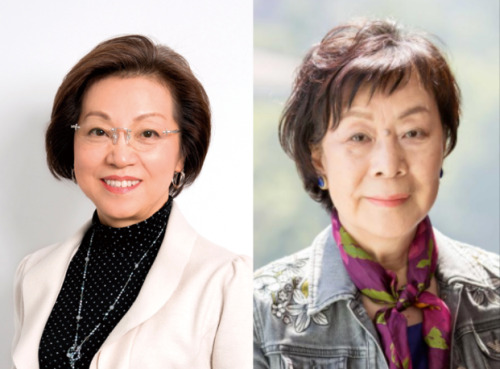
Keep reading
358 notes
·
View notes
Text
2024 Chil-Chil BL Awards
source
Webtoons
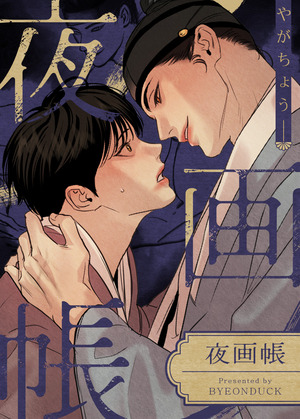

1 夜画帳 by Byeonduck
2 ちりぢりゆくの by まゆハル



3 変態ストーカーに狙われてます by みん未
4 JINX:ジンクス by Mingwa
5 水辺の夜 by euja



6 ENNEAD by MOJITO
7 鬼夜曲~闇に響く亡霊の唄~ by ANANAS / C.R Jade
8 冬すぎて桜 by Bamwoo

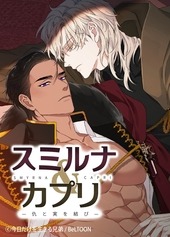

9 愛も憎しみも沈黙の中で by QiangTang / The Shubl Website / Baili Junxi
10 スミルナ&カプリ~仇と実を結び~ by 今日だけを生きる兄弟
11 チェックメイト〜君を取るのはこの俺〜 by TAN
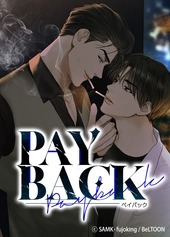

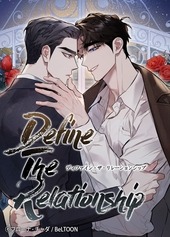
12 PAYBACK by fujoking / samk
13 セマンティックエラー by Angy / J.Soori
14 ディファイン・ザ・リレーションシップ by フローナ / チャダ
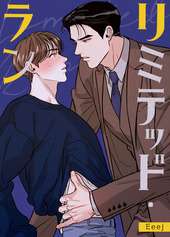
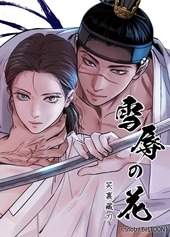

15 リミテッド・ラン by Eeej
16 雪辱の花 by snob
17 同情のカタチ by nodeok
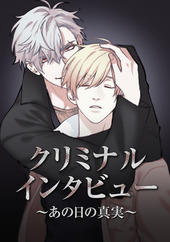

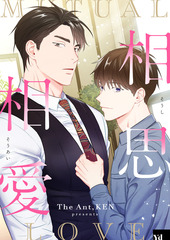
18 クリミナル・インタビュー ~あの日の真実~ by ピョン / Queensa
19 アツく抱きしめて by ナビッ シル
20 相思相愛 by KEN / Antstudio
-
All Categories
Comics
Series
Romantic Comedy
Emotional
Fetish
Deep
Next Generation
Novels
BLCD
BLCD Voice Actors
Webtoons
Expert
0 notes
Text
2024 Chil-Chil BL Awards
BLCD
source

1 タカラのびいどろ by 鈴丸みんた
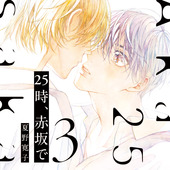


2 25時、赤坂で 3 by 夏野寛子
3 囀る鳥は羽ばたかない 8 by ヨネダコウ
4 体感予報 by 鯛野ニッケ



5 悩ましい彼 美しい彼 3 by 凪良ゆう / 葛西リカコ
6 そんなに言うなら抱いてやる 2 by にやま
7 ヤリチン☆ビッチ部 5 by おげれつたなか



8 ドラッグレス・セックス 辰見と戌井 II by エンゾウ
9 セブンティーンシロップス by あらた六花
10 凪がれ星 by ミギノヤギ
BLCD Voice Actors
source

1 斉藤壮馬 - 25時、赤坂で 3 by 夏野寛子
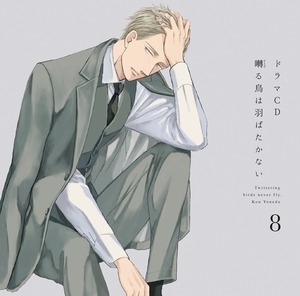
2 新垣樽助 - 囀る鳥は羽ばたかない 8 by ヨネダコウ
3 佐藤拓也 - 25時、赤坂で 3 by 夏野寛子

4 阿座上洋平 - 純情でなにが悪い by 冬縞しぐれ
5 羽多野渉 - 囀る鳥は羽ばたかない 8 by ヨネダコウ


6 小林千晃 - ふたりあそび by あがた愛
7 小林裕介 - タカラのびいどろ - 鈴丸みんた


8 江口拓也 - 愛日と花嫁 by 渚アユム
9 古川慎 - 凪がれ星 by ミギノヤギ
10 増田俊樹 - ふたりあそび by あがた愛
-
All Categories
Comics
Series
Romantic Comedy
Emotional
Fetish
Deep
Next Generation
Novels
BLCD
BLCD Voice Actors
Webtoons
Expert
0 notes
Text
2024 Chil-Chil BL Awards
source
Novel
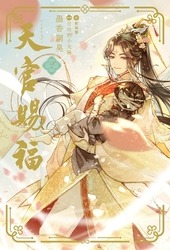

1 天官賜福 2 by 墨香銅臭 / 日出的小太陽 / 鄭穎馨
2 WISH DEADLOCK番外編 4 by 英田サキ/ 高階佑
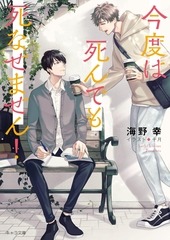


3 今度は死んでも死なせません! by 海野幸 / 十月
4 無能な皇子と呼ばれてますが中身は敵国の宰相です 2 by 夜光花 / サマミヤアカザ
5 幸せになりたいオメガ、騎士に嫁ぐ by 伊達きよ / 本��アキラ
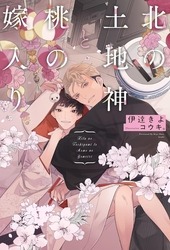
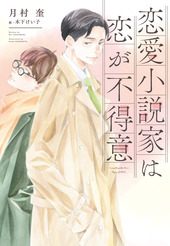

6 北の土地神と桃の嫁入り by 伊達きよ / コウキ。
7 恋愛家は恋が不得意 by 月村奎 / 木下けい子
8 ロング・エンゲージ by 安西リカ / 緒花

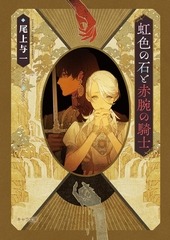

9 狐の巣ごもり -眷愛隷属- by 夜光花 / 笠井あゆみ
10 虹色の石と赤腕の騎士 花降る王子の婚礼 3 by 尾上与一 / yoco
11 隣の男 by 安西リカ / 北沢きょう

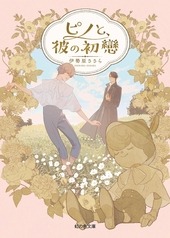

12 王を統べる運命の子 4 by 樋口美沙緒 / 麻々原絵里依
13 ピノと、彼の初戀 by 伊勢原ささら / yoco
14 とのこい by 朝丘戻 / 丹地陽子
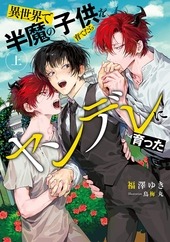

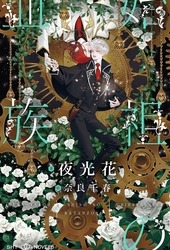
15 異世界で半魔の子供を育てたらヤンデレに育った 上 by 福澤ゆき / 鳥梅丸
16 刑事に決め手のプロポーズ by 高月紅葉 / 小山田あみ
17 始祖の血族 by 夜光花 / 奈良千春

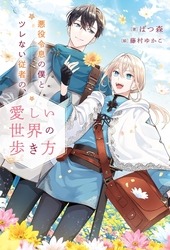

18 デレがバレバレなツンデレ猫獣人に懐かれてます by キトー / イサム
19 悪役令息の僕とツレない従者の、愛しい世界の歩き方 by ばつ森 / 藤村ゆかこ
20 精霊を宿す国 青雷 by 佐伊 吉茶
-
All Categories
Comics
Series
Romantic Comedy
Emotional
Fetish
Deep
Next Generation
Novels
BLCD
BLCD Voice Actors
Webtoons
Expert
0 notes
Text
2024 Chil-Chil BL Awards
source
Category: Next Generation


1 モンスターアンドゴースト 1 by ヒメミコ
2 ぼくのパパとパパの話 by ろじ



3 双子と先生 by かきのたね
4 北山くんと南谷くん by 砂藤シュガー
5 食べたくなっちゃった by 小畑つねちか

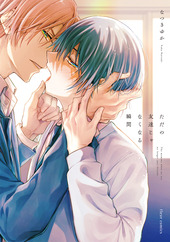
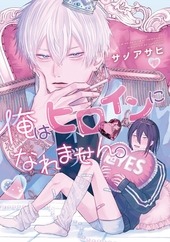
6 明日もきみに会いに行く by 熊雪ふる
7 ただの友達じゃなくなる瞬間 by なつきゆか
8 俺はヒロインになれません。 by サノアサヒ

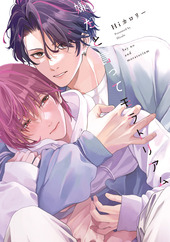
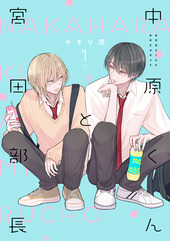
9 鮫は桜に恋をする by 涼
10 嫌だと言ってモラトリアム by Hiカロリー
11 中原くんと宮田部長 1 by やぎり茂

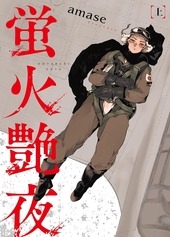

12 恋人がウブすぎて困る by 広田
13 蛍火艶夜 上 by amase
14 ディアマイキラーチューン by 否田


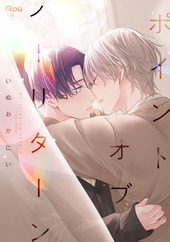
15 聞いて、俺の恥ずかしい音 by 吾瀬わぎもこ
16 君とじゃなきゃ恋もできない by 春野なぎ
17 ポイントオブノーリターン by いぬおかにい
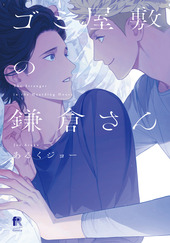
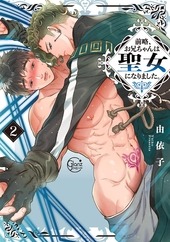
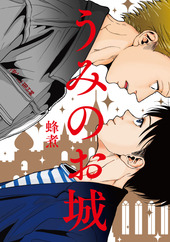
18 ゴミ屋敷の鎌倉さん by あるくジョー
19 前略、お兄ちゃんは聖女になりました。2 by 由依子
20 うみのお城 by 蜂煮
-
All Categories
Comics
Series
Romantic Comedy
Emotional
Fetish
Deep
Next Generation
Novels
BLCD
BLCD Voice Actors
Webtoons
Expert
0 notes



